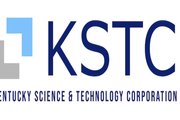
When Ricky Mason first started pitching BrainSTEM University's metaverse earlier this year, no one knew what he was talking about.
"It didn't hit home — investors didn't understand the technology," he said. "Our first pitch went horribly."
But that didn't stop Mason and his five-person team at the edtech startup from creating it anyways, pushing past his concerns about being too far ahead of the curve. Now, months later, everyone is talking about the metaverse after tech giant Facebook announced it will be the "next evolution of social technology," effectively changing its name to Meta in the process.
That's pretty validating for BrainSTEM and its "Metaversity" being used in a classroom today at St. Francis School in Louisville.
In an interview Thursday, Mason said he and his team started ideating about the metaverse and its potential uses in education in January 2021. They were looking for an alternative to Zoom that would increase student engagement in BrainSTEM's virtual learning environment in an accessible way.
"We had a virtual platform with Zoom and chat rooms for students and instructors," Mason said. "But students would come into class with their cameras off and while they were paying attention, I realized they were coding their robots and doing work during the lessons.
"I thought, 'OK, how do we fix that and make this a better experience?' The metaverse was the answer to that."
What is a metaverse? Like most cool things, the term "metaverse" actually came from a sci-fi novel. Neal Stephenson coined it in his 1992 book "Snow Crash," referring to a virtual world inhabited by real people. There are metaverse-style games currently on the market (think Fortnite, Roblox and Animal Crossing) but the "real" metaverse experience will be like an extension of your everyday life, using avatars to engage in virtual spaces and events.
"Web 3.0 and the metaverse are connecting us to spaces, places and things, and it's giving those things meaning and blurring the lines between our social lives online and in the real world," Mason explained.
Within BrainSTEM's Metaversity, students have their own avatars that can walk around and talk to their classmates and instructors while learning to program their own games in the 3D virtual world. Mason said the feedback from the pilot program at St. Francis has been amazing and he anticipates 200 more students will on the platform in spring 2022.
Mason said BrainSTEM is in the midst of raising $2 million to $2.5 million in a seed round to develop its Metaversity into a user-friendly teaching tool and continue to build out more science, technology, engineering and math (STEM) curriculum within the metaverse.
"I think we're meeting a need on two sides here, not only for the metaverse with the accessibility and connecting students and building that online community, but also in STEM education," he said. "Schools are struggling to recruit STEM teachers and to even find consistent curriculum. Computer science is going to be a core subject before we know it, and that's one of the things that we're looking to really push forward and move the needle on is STEM in K-12 schools."
You can check out BrainSTEM's 5-minute pitch and get a glimpse of the Metaversity here.









